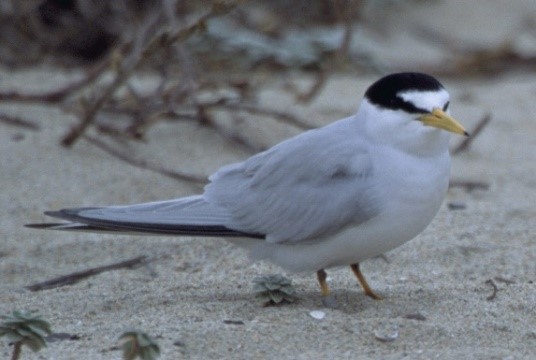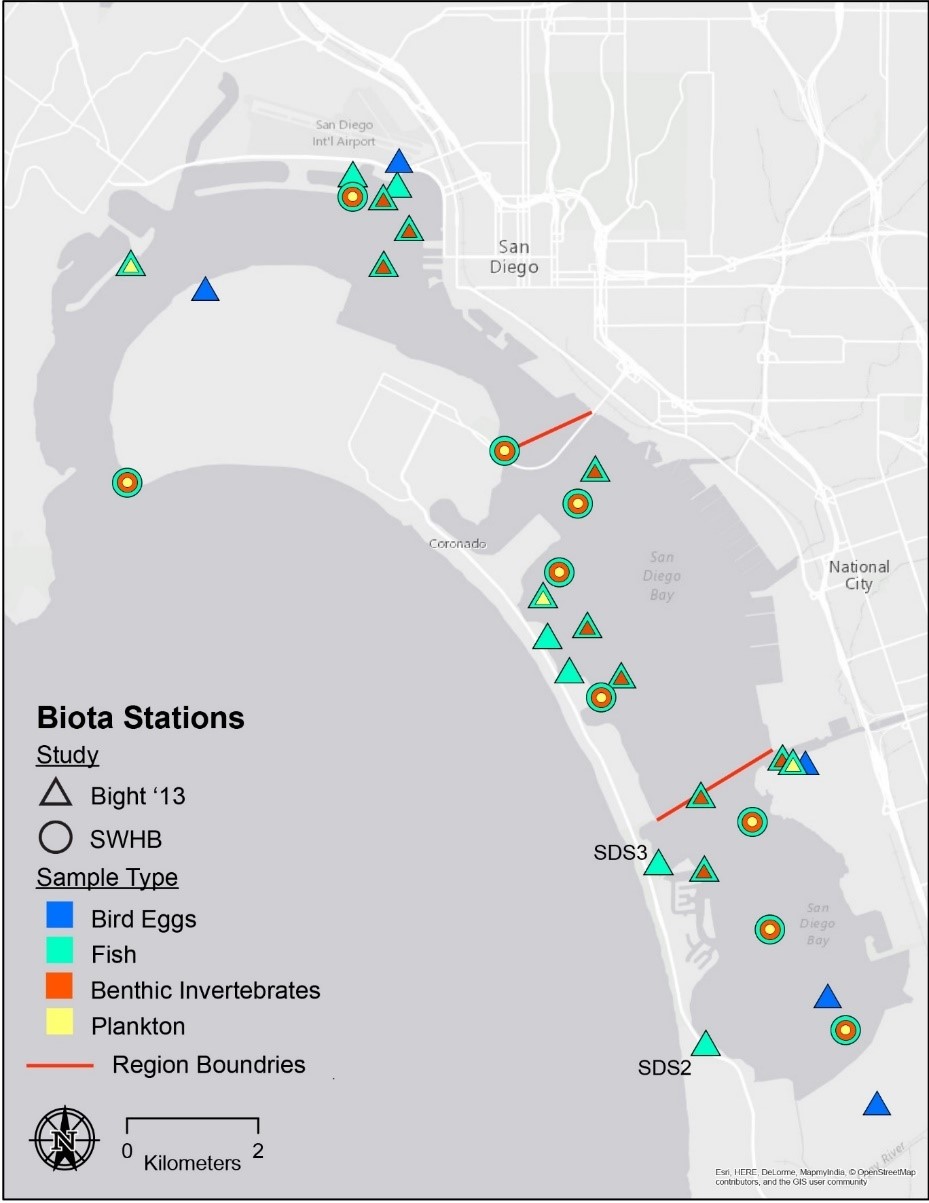Bioaccumulation study informs health risks from sediment

SCCWRP and its partners have completed a comprehensive investigation into how sediment contamination is transferred through Southern California marine food webs, a study that has enabled scientists to close key data gaps and build more accurate models for estimating health risks to wildlife and humans across coastal California.
The three-year study, which was finalized in October, was conducted in San Diego Bay; it already is being used to refine and calibrate a standardized sediment assessment framework under development for California’s coastal embayments to extend greater protections to human health. The statewide Sediment Quality Objective (SQO) for protection of human health – which relies on bioaccumulation models to explain how contaminants travel through food webs – will help inform sediment clean-up targets and other management actions for embayments.

The study involved linking major contaminants found in San Diego Bay sediment – including PCBs, pesticides and trace metals – to the contaminants that were found to be bioaccumulating in organisms throughout the marine food web, from sediment-dwelling organisms to seabirds. Sediment contaminants are transferred through food webs by each successive predator that consumes its prey.
The study found that all types of sportfish examined had contamination levels that exceeded statewide safe-eating guidelines for humans, and seabirds also were potentially at risk from eating fish that had mercury and PCB contamination.
However, the health risks from sediment contamination were low, and conditions have improved in recent years, according to the study. For example, PCB contamination in seafood has dropped two- to five-fold over the past 15 years.
San Diego Bay environmental managers will use the study’s findings to take more effective, targeted actions to continue to improve the bay’s sediment quality.
In early 2017, the State Water Board is expected to release a draft of the California SQO assessment framework for protection of human health; the framework has been improved using data obtained from the San Diego Bay bioaccumulation study and other case studies. The counterpart to the SQO human health framework – the SQO assessment framework for the protection of sediment-dwelling aquatic life – was co-developed by SCCWRP and adopted by the State Water Board in 2009
More news related to: Sediment Quality, Sediment Quality Assessment Frameworks, Top News